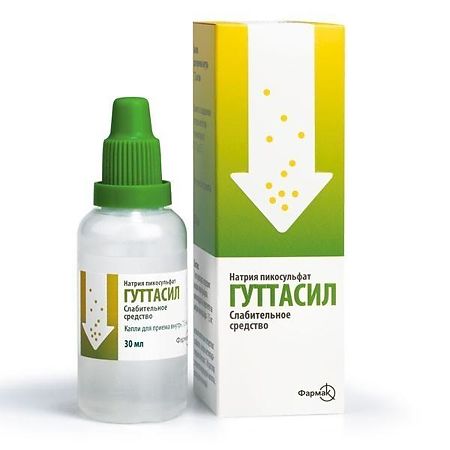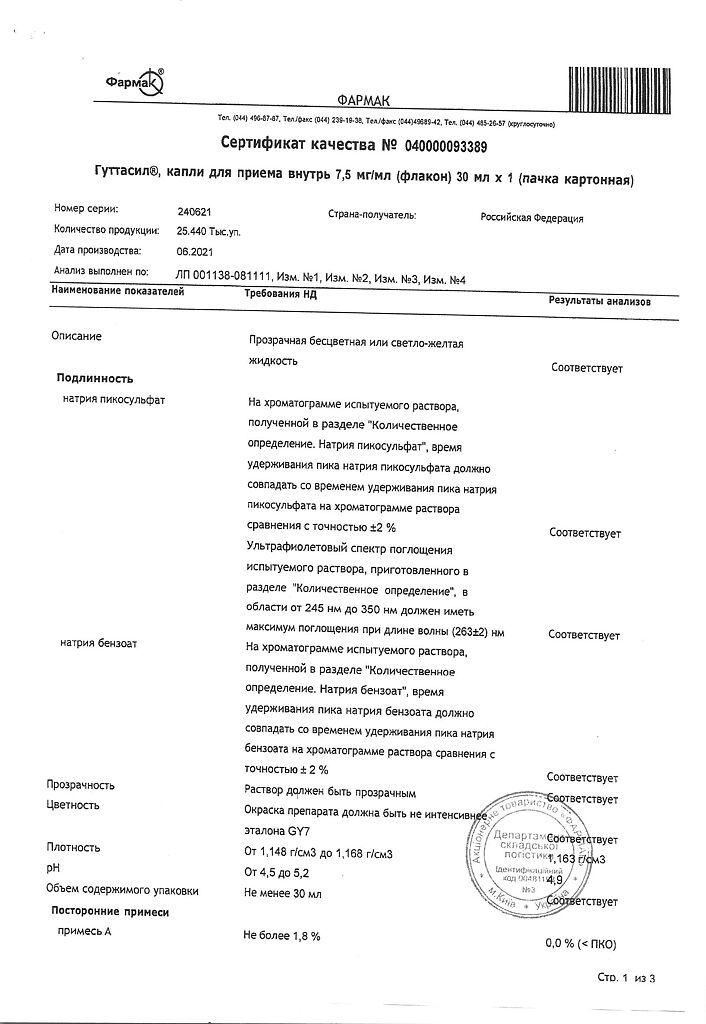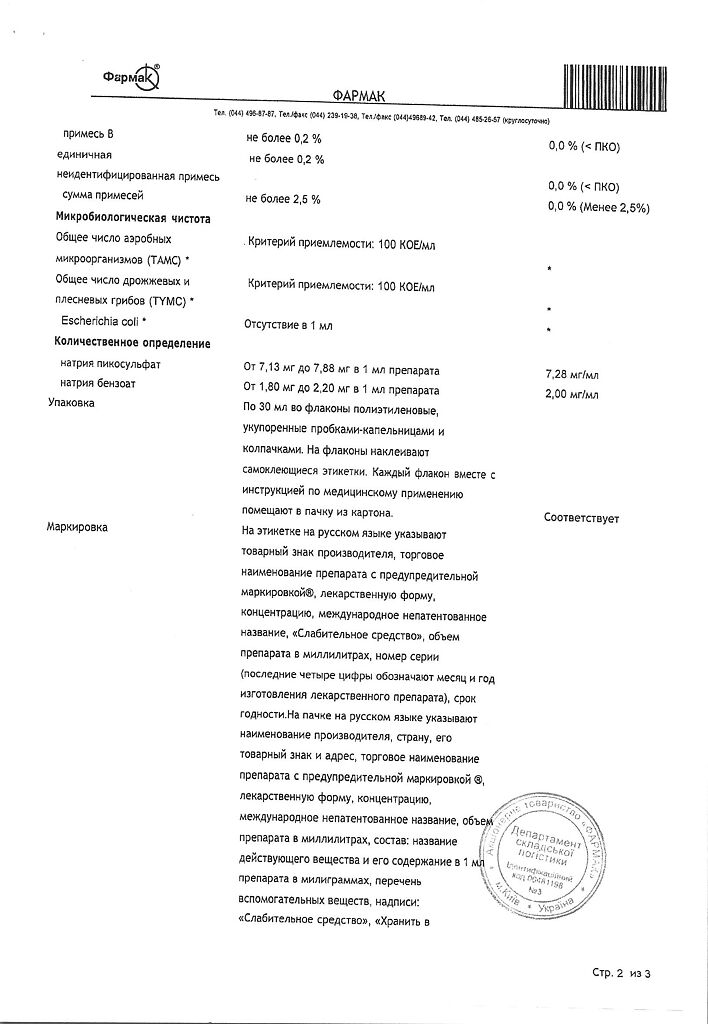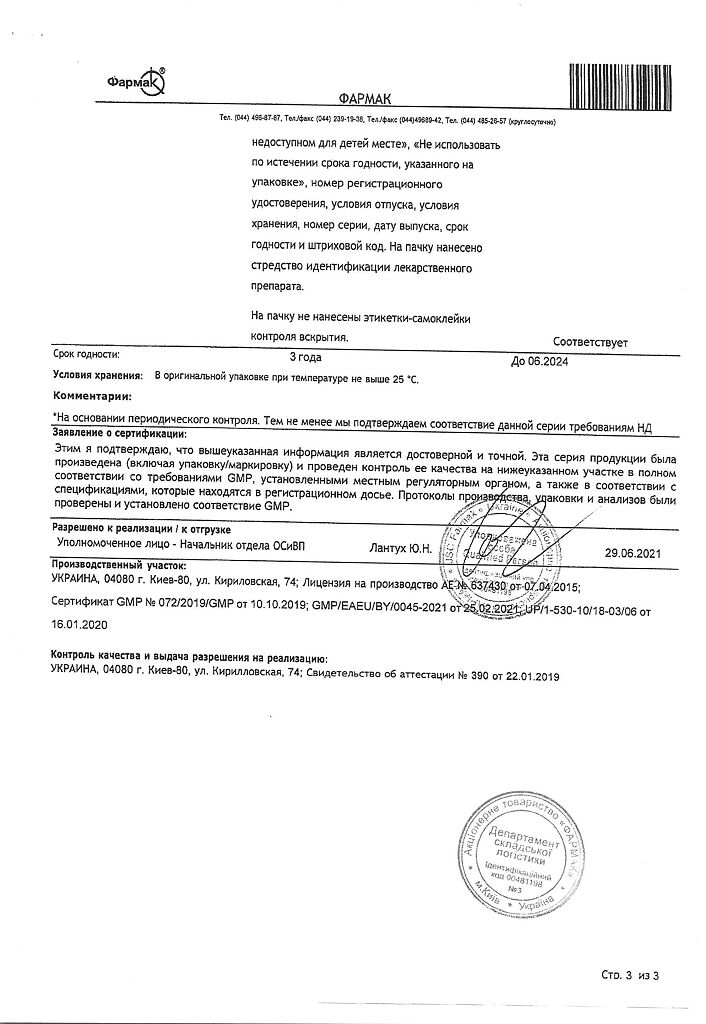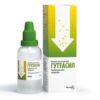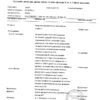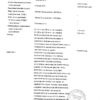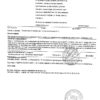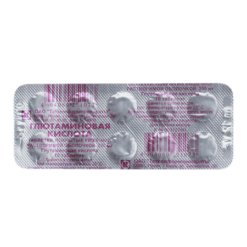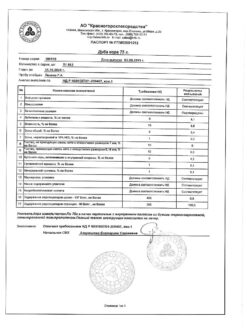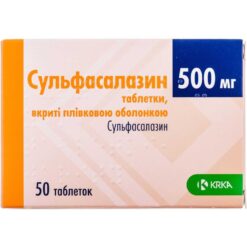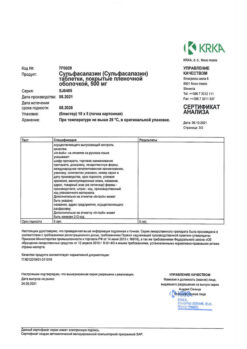No products in the cart.
Guttasil, drops 7.5 mg/ml fl. 30 ml
€12.00 €10.00
Description
Guttasil is a laxative.
Pharmacodynamics
The contact laxative of triarylmethane group is activated in the large intestine under the action of bacterial sulfatases; the substance which is released, stimulates sensitive nerve endings of the intestinal mucosa, increases its motility. Use of the drug is not accompanied by tenesmus and intestinal spasms.
In case of course treatment Guttasil stimulates growth and metabolic activity of normal intestinal microflora.
Pharmacokinetics
After oral administration it reaches the large intestine without significant absorption, where under the influence of bacterial flora it is broken down to form the active form – bis-(p-hydroxyphenyl)-pyridyl-2-methane. Laxative effect develops 6-12 hours after intake, intensity of the laxative effect does not correlate with the level of active bis-(p-hydroxyphenyl)-pyridyl-2-methane in blood plasma. It is not subject to hepatic-intestinal recirculation.
Indications
Indications
Constipation or cases that require relief of defecation (hemorrhoids, proctitis, anal fissures, preparation for surgical interventions, instrumental and radiological examinations).
Active ingredient
Active ingredient
Composition
Composition
Active ingredient:
Sodium picosulfate monohydrate (in terms of sodium picosulfate) 7.5 mg;
Auxiliary substances:
sorbitol, 460 mg;
sodium methyl parahydroxybenzoate, 2 mg;
1M hydrochloric acid solution – up to pH 6-7;
water for injection – up to 1 ml
How to take, the dosage
How to take, the dosage
Ingestion, overnight (in order to have stools the next morning).
The drug is dosed with the manufacturer’s dispenser. Adults and children over 10 years – 13-27 drops (5-10 mg); children from 4 to 10 years – 7-13 drops (2.5-5 mg). For children under 4 years of age, dosing at the rate of 250 mcg/kg (2 drops/3 kg) is recommended. The drug may be added to food for children. A single dose of the drug is effective in children. If necessary, the course of treatment in a child may be prolonged, but it is preferable to limit it to three days.
To relieve constipation in cancer patients who receive high doses of opioids, it is used by prescription.
Interaction
Interaction
Electrolyte imbalance may lead to decreased tolerance to cardiac glycosides.
Diuretics or GCS may increase the severity of hypokalemia caused by high-dose administration of Guttasil.
Concomitant treatment with antibiotics may decrease the laxative effect of the drug.
Special Instructions
Special Instructions
Like other laxatives, Guttasil should not be taken daily for a long time. If daily use of laxatives is necessary, the cause of constipation should be investigated. Prolonged use of laxatives may cause electrolyte imbalance and hypokalemia, and may also lead to addiction and constipation due to the ricochet effect.
Guttasil is effective in relieving constipation in cancer patients receiving high doses of opioids.
The drug contains sorbitol, so it is not recommended for patients with rare hereditary fructose intolerance.
Impact on the ability to drive and operate machinery. In therapeutic doses the drug does not affect the ability to drive vehicles and operate other mechanisms.
Contraindications
Contraindications
With caution: elderly patients, hypokalemia, increased magnesium in the blood, patients with asthenia, II-III trimesters of pregnancy.
Side effects
Side effects
Skin disorders: skin rash, urticaria, itching.
Water-electrolyte balance: loss of potassium, sodium and other electrolytes, possible development of dehydration.
Digestive system disorders: dyspeptic complaints, vomiting, nausea, abdominal cramps and pain, diarrhea, flatulence, pain in the stomach and anus area, increased intestinal motility, which improve with reduction of the drug dose.
Immune system disorders: allergic reactions, angioedema.
CNS disorders: headache, increased fatigue, drowsiness, seizures.
Overdose
Overdose
Symptoms: high doses of Guttasil may cause liquid defecation, abdominal cramps (colic) and clinically significant disorders of water-electrolyte balance (hypokalemia, loss of other electrolytes and fluid), ischemia of the colonic mucosa.
Long-term overdose leads to development of chronic diarrhea and abdominal pain, hypokalemia, secondary hyperaldosteronism, renal damage and development of nephrolithiasis, metabolic alkalosis, hypokalemia and muscle weakness as a result of hypokalemia are possible.
The treatment: gastric lavage, prescription of enterosorbents (activated carbon), symptomatic treatment (correcting the water-electrolyte balance, administration of antispasmodics).
Similarities
Similarities
Additional information
| Shelf life | 3 years |
|---|---|
| Conditions of storage | In a light-protected place at 15-25 °C. |
| Manufacturer | Farmak, Ukraine |
| Medication form | oral drops |
| Brand | Farmak |
Related products
Buy Guttasil, drops 7.5 mg/ml fl. 30 ml with delivery to USA, UK, Europe and over 120 other countries.

